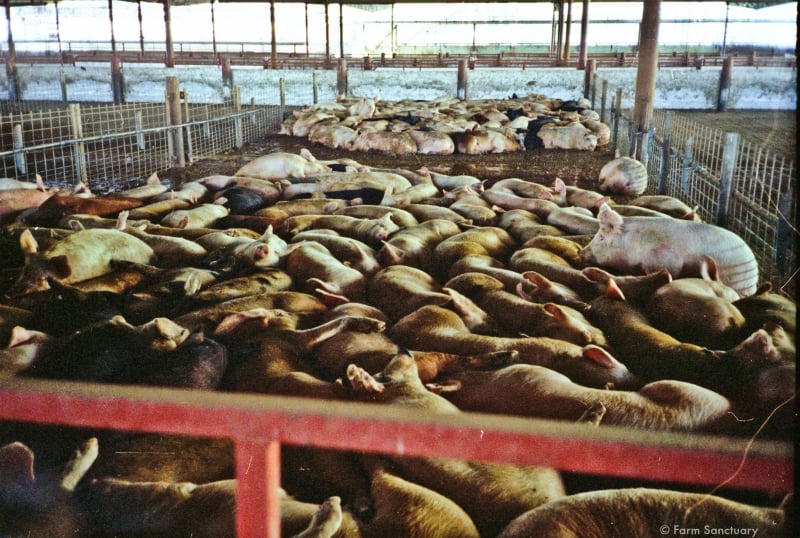
Pigs in a slaughterhouse holding pen.
By Bruce Friedrich, Director of Policy and Advocacy
Follow @BruceGFriedrich
Earlier this month, Farm Sanctuary joined forces with five other nonprofits — Animal Legal Defense Fund, Compassion Over Killing, Farm Forward, Mercy for Animals, and People for the Ethical Treatment of Animals — in submitting a 38-page petition for rulemaking to the United States Department of Agriculture’s (USDA) Food Safety and Inspection Service (FSIS), calling on the Agency to stop almost entirely ignoring the Humane Methods of Livestock Slaughter Act (HMSA).
We did this because the HMSA is grossly neglected by the agency charged with enforcing it, so that animals are being tortured in U.S. slaughterhouses, even though there are USDA inspectors on site who could stop it. This petition is focused on stopping illegal cruelty, and does not imply that there is any such thing as “humane slaughter” — we see those terms as inherently contradictory.
Our petition asks that:
- USDA’s definition of “egregious” as applied to the HMSA be codified in regulation;
- USDA ensure that all violations of HMSA result in at least a “Noncompliance Record” (NR) to document the violation;
- USDA ensure that all egregious violations of HMSA result in at least a plant suspension;
- USDA refer reckless and intentional cruelty for criminal prosecution;
- USDA create a structure for closing down the worst slaughterhouses completely.
We are making these recommendations because:
- Undercover investigations have documented almost unfathomable abuse at USDA-inspected slaughterhouses, abuse that was not caught or cited by USDA’s inspectors in the plants in question.
- USDA’s own OIG and the Government Accountability Office have both consistently documented lax enforcement of the HMSA, and they have called for USDA to do better. But the agency has not improved.
- FOIA records from USDA document workers running over crippled animals with construction equipment and electrocuting them in their genitals and anuses, animals running around the slaughter floor with massive head wounds, animals regaining consciousness mid-slaughter, and plants that continue to operate even after being cited many times for inhumane slaughter.
Although our requests involve only small changes to current FSIS policy, they will significantly improve compliance with the mandates of the HMSA if implemented.
You can read the full petition here.
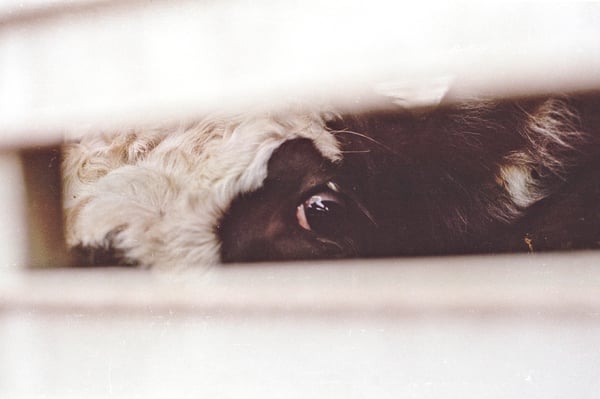
A cow looks out from a transport vehicle.

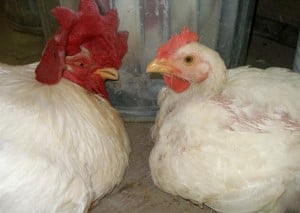
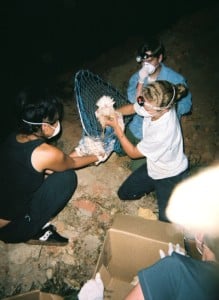
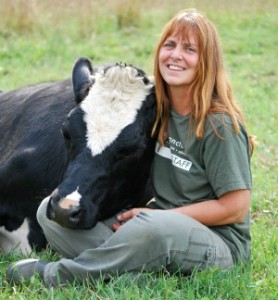 It’s no wonder that Farm Sanctuary National Shelter Director Susie Coston is known as “The Farm Animal Whisperer.” She has two decades’ worth of experience running animal sanctuaries, and in her spare time (ha!), she leads our annual
It’s no wonder that Farm Sanctuary National Shelter Director Susie Coston is known as “The Farm Animal Whisperer.” She has two decades’ worth of experience running animal sanctuaries, and in her spare time (ha!), she leads our annual 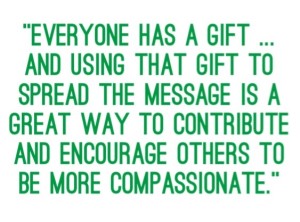 On getting along with meat-eaters, despite knowing the plight of farm animals:
On getting along with meat-eaters, despite knowing the plight of farm animals: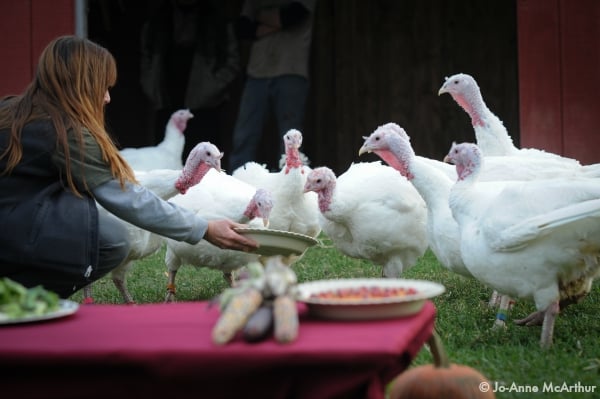
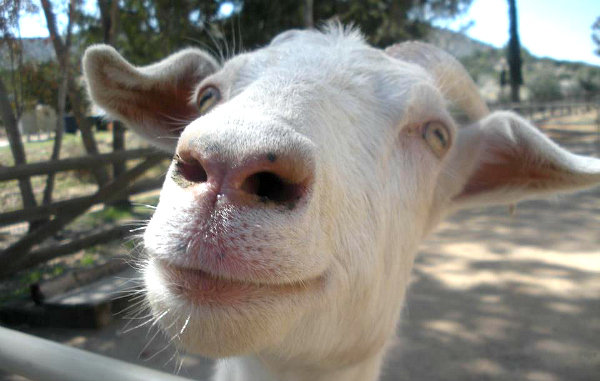
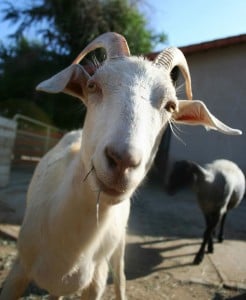
 It was only four years ago that we said hello to Prince. Police officers who pulled over a car for speeding found the two-week-old Saanen stuffed in a bag inside. Prince was seized and brought to the San Gabriel Valley Humane Society. From there we welcomed him to the shelter.
It was only four years ago that we said hello to Prince. Police officers who pulled over a car for speeding found the two-week-old Saanen stuffed in a bag inside. Prince was seized and brought to the San Gabriel Valley Humane Society. From there we welcomed him to the shelter.